Check out this blog post with all my favorite clean beauty brands! For the latest on all beauty news, add yourself to my Instagram Beauty Channel or email newsletter.
——
With summer around the corner, our sunscreen stash is stocked and ready! I’m sharing why we’re serious about using safer sunscreen for the whole family.
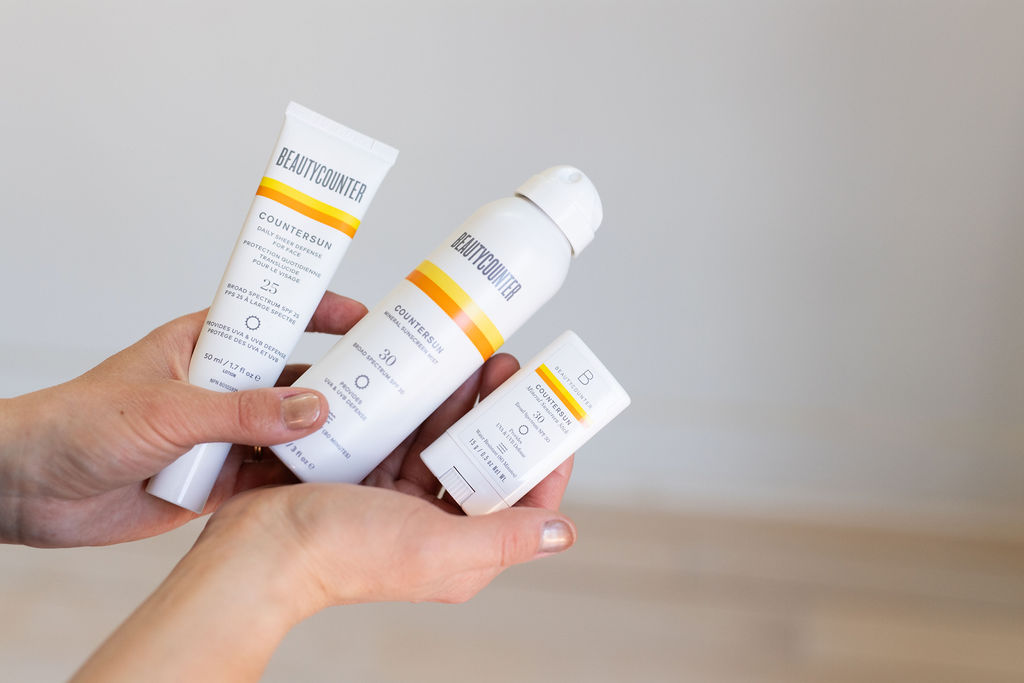
We recently spent Spring Break in Aruba with our whole family, and while it wasn’t sizzling summer heat, we had our full stash of sunscreen on standby so we could still protect our skin. As you probably know, it’s important to use sun protection and broad spectrum SPF even on cloudy days!
How I Switched To Safer Sunscreen
We went to the Florida Keys when Birch was about 6 months old. I picked up some cheap chemical spray sunscreen at the grocery store while we were there, and I just felt really yucky about spraying it all over the kids and me. Not only did it bother me that I was covering myself in head to toe absorbable chemicals, but the cloud that I was breathing in as I sprayed us all down was not pleasant to inhale.
No one loves having to cover their body in sunscreen, yet we all know that sun protection is key to prevent sun damage that leads to risk of skin cancer and premature aging. Lotions can be goopy and sprays, while convenient, are packed with chemicals that endanger reefs. I knew I needed something that both felt good going on and felt good for my health and the planet.
Sunscreen was actually my gateway into Beautycounter.
Going back to spring break, I remembered that my mom had given me some Beautycounter sunscreen she ordered through her friend, and I vowed to buy some more when I got home.
That very same day my long-time blog friend Teri reached out to me about Beautycounter in general, and I knew if I was placing a big sunscreen order I might as well sign up as a Brand Advocate to get a discount. Once I decided to switch to safer sunscreen, I committed to detoxing all of our personal care products at the same time.
Since then, I’ve shared about all of the other clean beauty essentials we use in our household, whether that’s the skincare and makeup I love, hand soap by the bathroom sink, or body wash for the kids. I honestly love the products and love them even more knowing that the company mission aligns with my own to support sustainability and reef-safe sunscreens.
Shopping with Beautycounter is a way for me to simplify my life: I can trust that whatever products I buy have been thoughtfully curated with sustainability and transparency top of mind.
The Sheer Face Sunscreen is perfect for everyday use under makeup!
- Sheer Face Sunscreen
- All Rubbed In!
Safer Sunscreen 101
Sunscreen Basics
UVA = Sun’s Aging Rays
These rays penetrate deep into the skin to cause the free radical damage that contributes to premature aging and the skin cancer. They are present year-round and aren’t blocked by glass and clouds.
UVB = Sun’s Burning Rays
These rays are the primary cause of sunburn and skin cancer, so we see and feel the damage as it occurs.
Blue Light = Sun & Screen Rays
High-Energy Visible (HEV) blue light comes not just from the sun, but also smartphones, tablets, and computer screens. It can cause skin damage, including visible signs of aging.
Higher SPF can = higher amounts of toxins
Little-known fact: higher SPFs do not always translate to higher sun protection factor. There is only a 1% difference in protection from SPF 30 to SPF 40 to SPF 50 and beyond that, the protection increases are negligible.
“Sunscreens with higher SPF values have higher concentrations of chemicals that can disrupt hormones, trigger allergic reactions or damage skin. They may also contain SPF boosters that simply mask the signs of damage caused by ultraviolet (UV) radiation, rather than protect you from it.” – Environmental Working Group
Chemical vs. Mineral Sunscreens
Chemical Sunscreens are technically sun filters because they absorb the sun’s UV energy and release it back into the air as heat. They are popular because they provide easy, transparent blend-ability into the skin. But Beautycounter never uses chemical filters due to the potential for skin irritation. Chemical sunscreens are the most commonly purchased sunscreen.
Mineral Sunscreens (physical sunscreens) are Beautycounter’s preferred sunscreen technology. Zinc oxide and titanium dioxide are physical particles that sit on the surface of the skin and scatter or reflect sun’s rays away from the skin. Mineral sunscreens are great for people with sensitive skin and they are reef friendly.
“The Food & Drug Administration announced that it has proposed a rule to declare mineral sunscreen ingredients as safe, specifically zinc oxide and titanium dioxide. The agency said 12 other chemicals commonly used in sunscreens need more research to determine if they can be officially listed as safe, including oxybenzone and octinoxate.” You can read the full article here.
The answer is not to stop wearing sunscreen. It’s to look for sunscreens that feature zinc and titanium dioxide as the active ingredients. It’s important to do your own research (I love the EWG.ORG/SKINDEEP database for its safety data on public health to see how toxic products are) and make the best choices for you and your family.
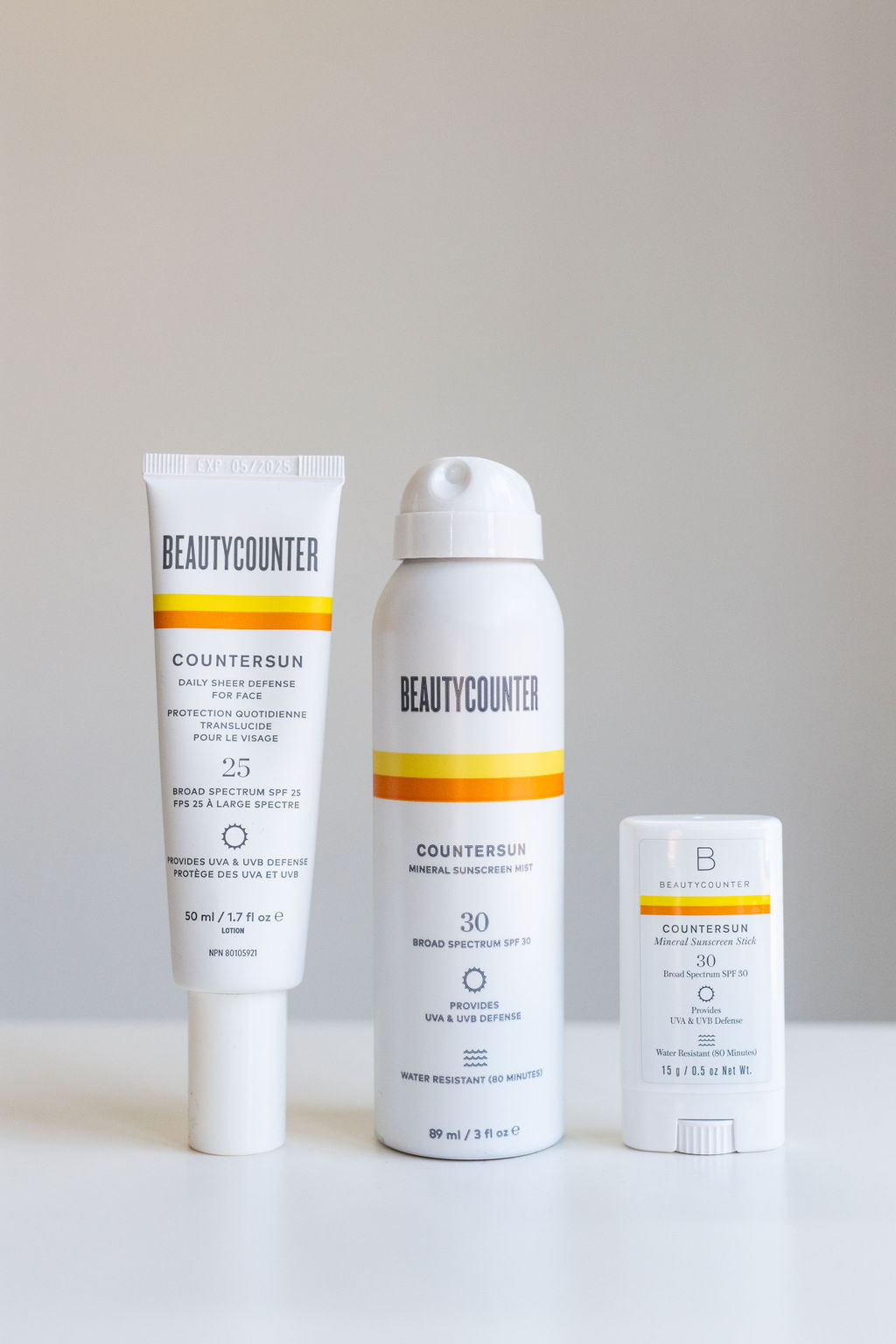
Best Safer Sunscreen: Countersun
Countersun, Beautycounter’s safer sun care line, contains physical blocking sunscreen (using non-nano zinc oxide). The Countersun products do not contain chemical ingredients (like oxybenzone) known to damage the coral reefs. Plus, as broad spectrum natural sunscreens, not only do they protect against UVA rays (aging) and UVB rays (burning), but blue light as well.

Conventional chemical sunscreens might protect you from UVA and UVB rays, but you are also applying a lot of unnecessary chemicals to your skin, many of which are banned in other countries and not regulated in the U.S. Beautycounter always excludes 2,800+ potentially harmful ingredients from all of their products – known as The Never List.
Why We Love Beautycounter’s Sunscreen Products + How We Use Them
While you could certainly get the lotion and call it a day, there are four different Countersun formulas, and I use them all differently! They are all zinc-based and have water resistance for use on land and in water. As far as sunscreen sprays go, the Beautycounter spray mist is as good as it gets with a balance of safety and usability.
The Lotion – A classic lotion / sunscreen cream that is thick and easy to spread. It almost has a whipped texture so it won’t run down your legs. I use it for kids legs and on smaller areas of my body (like my neck). It’s also water-resistant for up to 40 minutes.
The Stick – This is great for kids’ faces and necks. The shea butter, coconut oil, and cocoa butter-infused stick won’t run into eyes. It does leave a little bit of a white cast, but it’s not going to turn their whole face white. I like that you can sort of see where you have already covered to make sure you don’t miss a spot! I use it on myself when I’m reapplying on the beach or at the pool.
The Mist – This is a spray-on zinc that you do have to rub in, but the spray distributes a mist across your arms, legs, and back so that it’s super fast and easy to rub in and my favorite body sunscreen. It also has a dryer texture, so your hands aren’t greasy after. (The worst part of sunscreen if you ask me!) I use the mist all of over my body and sometimes on kids’ legs or backs if they don’t wear a rash guard. Plus, it’s a non-aerosol spray – thumbs up. It is moisturizing and not too drying thanks to sunflower seed oil. The mist is water resistant for up to 80 minutes, so it’s a great choice for the beach.
Daily Sheer Defense for Face – It’s the perfect sunscreen to wear daily under makeup. A lot of zinc sunscreens typically leave a white cast – this one doesn’t!
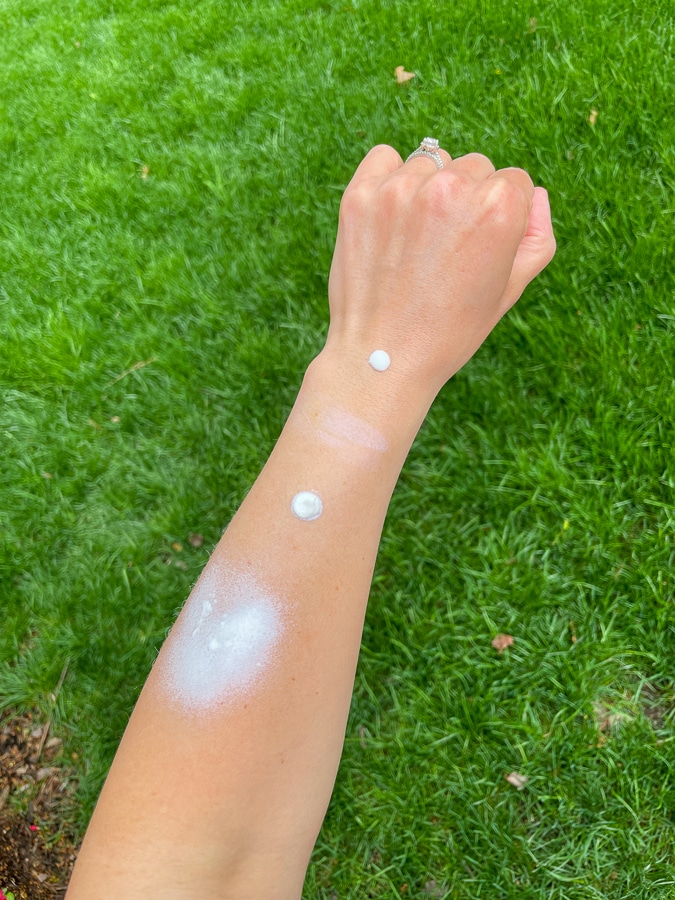
From top to bottom: 1) face, 2) stick, 3) lotion, 4) mist.
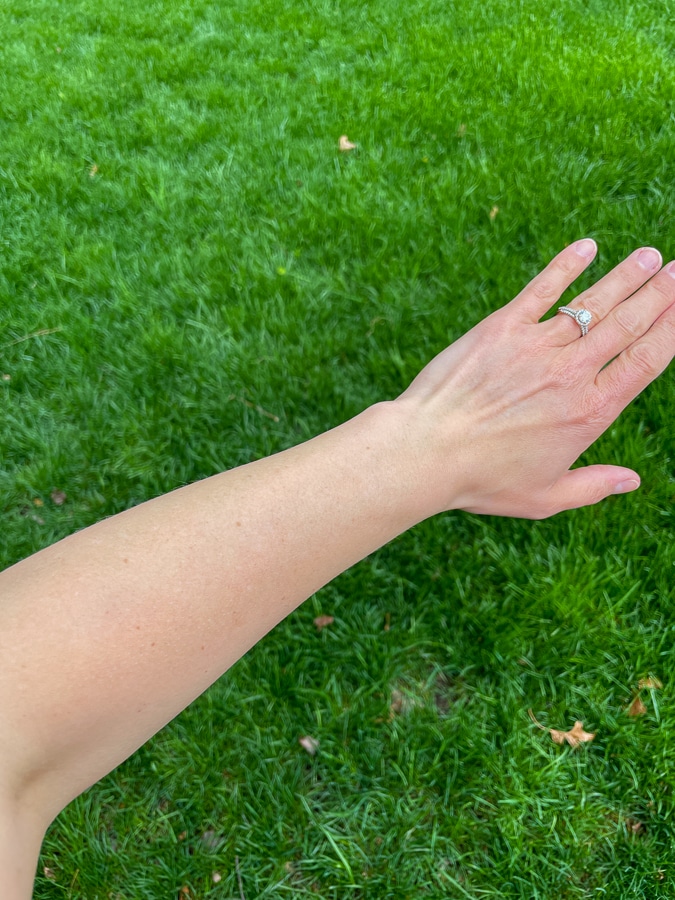
All rubbed in – no chalky white cast!
Learn more about safer sunscreen:


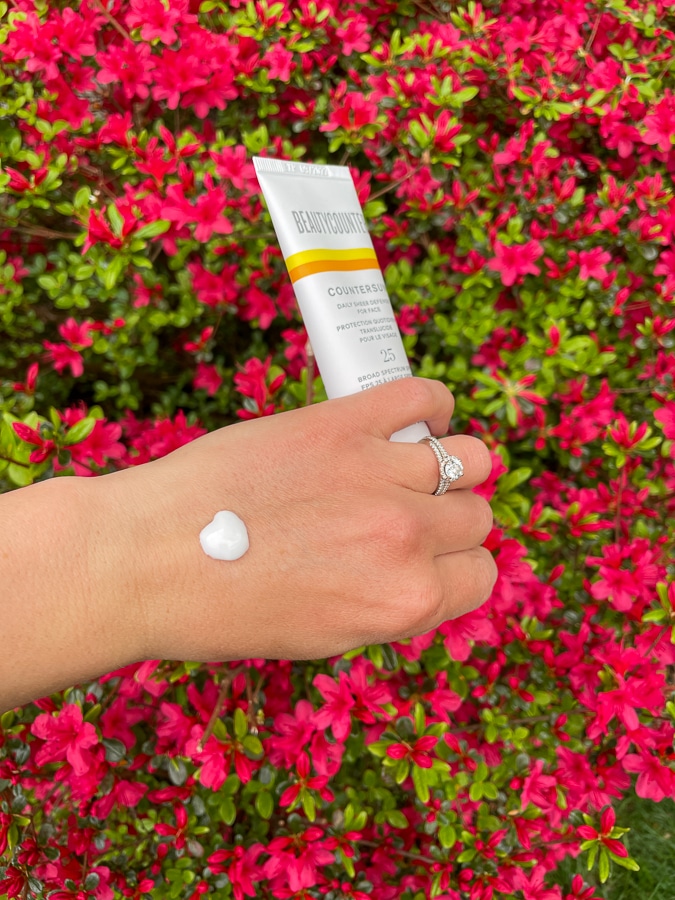
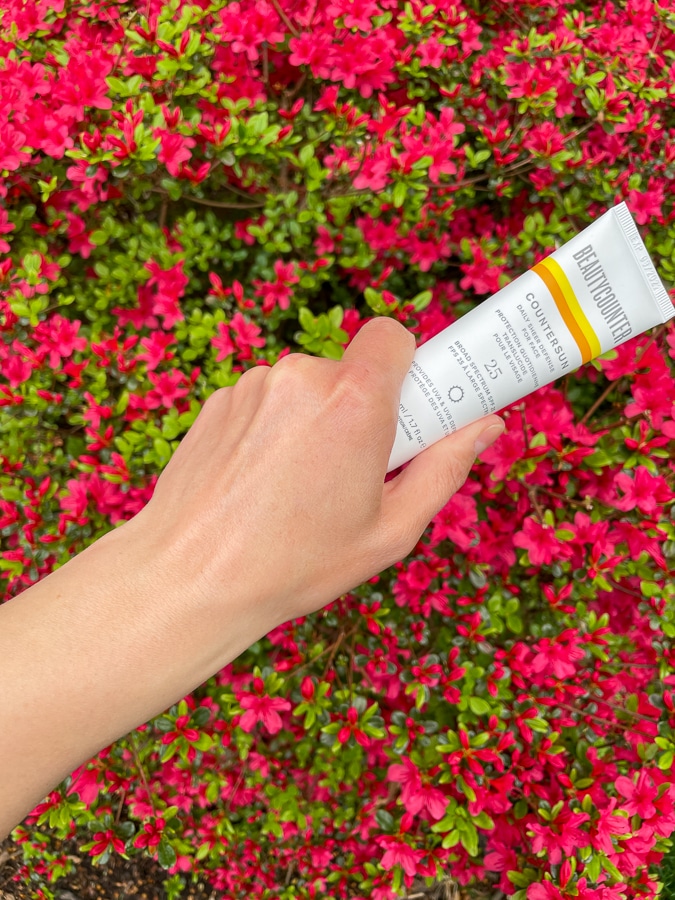


Nancy says
I have CounterSun lotion left over from last summer. Can I safely use it this summer?
Kath Younger says
There should be an expiration date on the bottom of the tube or spray – if that’s good then yes!